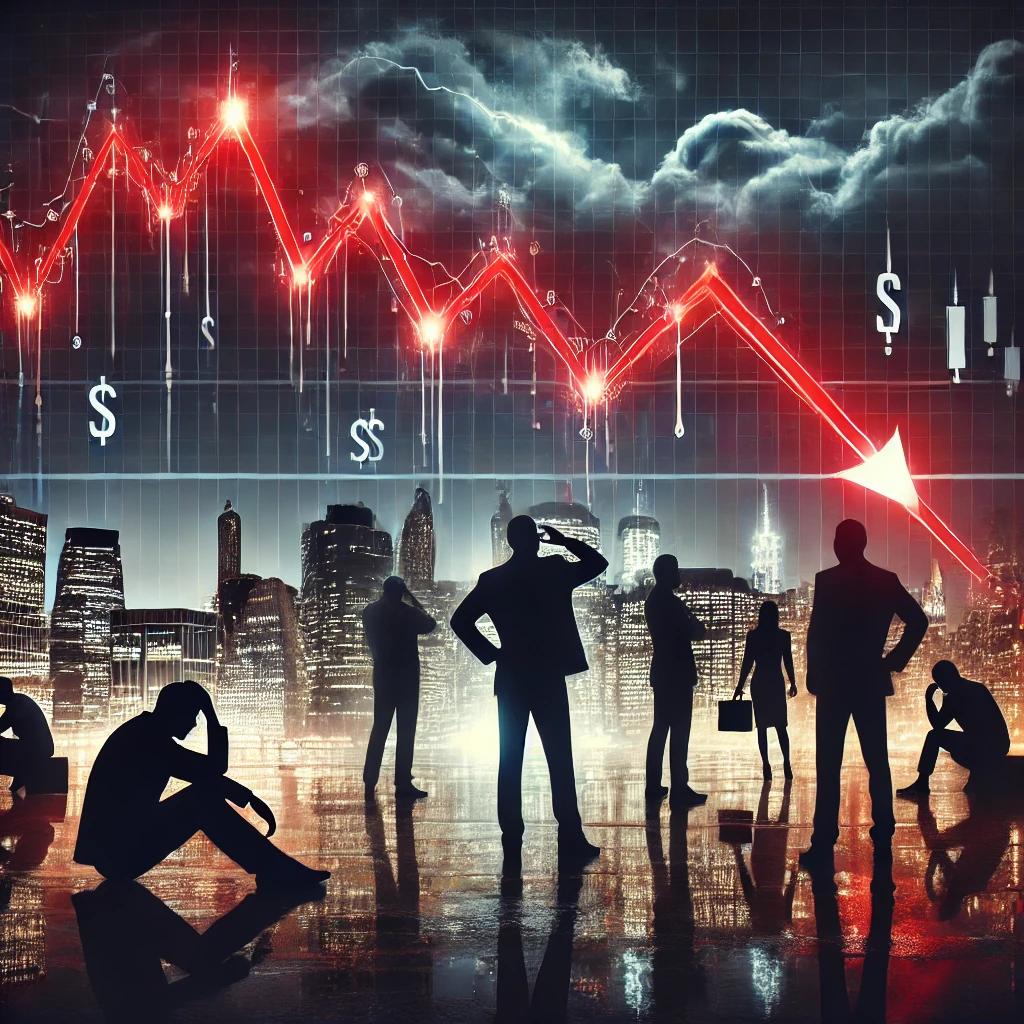
Top 10 Stock Market Crashes in History: Lessons and Insights
Top Stock Market Crashes in History: Lessons and Insights
Stock markets have always been a key driver of economic growth, but they’re also prone to volatility. Over the years, several stock market crashes have shaken global economies, wiping out trillions of dollars and leaving a lasting impact on investors. Let’s explore the top stock market crashes in history, their causes, impacts, and the lessons they teach us.
1. The Wall Street Crash of 1929 (The Great Depression)
- When: October 1929
- Key Event: The U.S. stock market peaked during the 1920s but crashed on October 24 (“Black Thursday”) and October 29 (“Black Tuesday”).
- Cause: Excessive speculation and over-leveraging by investors.
- Impact: The U.S. stock market lost 89% of its value over three years, leading to a global depression, mass unemployment, and a decade of economic stagnation.
- Lesson: Avoid speculative bubbles and diversify investments.
2. Black Monday (1987 Crash)
- When: October 19, 1987
- Key Event: The Dow Jones Industrial Average plunged 22.6% in a single day, the largest one-day percentage drop in history.
- Cause: Program trading, overvalued stocks, and investor panic.
- Impact: Global markets experienced sharp declines, but recovery was quick due to coordinated central bank interventions.
- Lesson: Investor panic can amplify losses; stay calm and stick to long-term plans.
3. The Dot-Com Bubble Burst (2000-2002)
- When: 2000-2002
- Key Event: Overhyped internet startups drove a speculative bubble, which burst, causing tech stocks to plummet.
- Cause: Unrealistic expectations of profitability for internet-based companies.
- Impact: The NASDAQ lost 78% of its value, and countless startups went bankrupt.
- Lesson: Evaluate company fundamentals and avoid herd mentality.
4. The 2008 Financial Crisis
- When: 2007-2009
- Key Event: The collapse of Lehman Brothers and widespread subprime mortgage defaults triggered a global financial meltdown.
- Cause: Risky lending practices, lack of regulation, and over-leveraging.
- Impact: Dow Jones dropped over 50%, millions lost jobs, and the global economy plunged into recession.
- Lesson: Monitor debt levels and be cautious during economic booms.
5. The COVID-19 Crash (2020)
- When: March 2020
- Key Event: Global markets saw one of the fastest declines in history due to pandemic-related panic.
- Cause: Uncertainty surrounding COVID-19 and its economic impact.
- Impact: The Dow Jones fell 37% within a month, but swift government interventions spurred a rapid recovery.
- Lesson: Market recoveries often follow steep declines; patience is key.
6. Asian Financial Crisis (1997)
- When: 1997-1998
- Key Event: Thailand’s currency devaluation led to financial turmoil across Asia.
- Cause: Over-leveraged economies and speculative investments.
- Impact: Stock markets collapsed, foreign investments dried up, and millions fell into poverty.
- Lesson: Maintain economic fundamentals and avoid excessive foreign debt.
7. Japanese Asset Price Bubble Burst (1991)
- When: 1991-1992
- Key Event: Japan’s stock and real estate markets collapsed after years of overvaluation.
- Cause: Loose monetary policies and speculative investments.
- Impact: Japan’s economy stagnated for decades, leading to the “Lost Decade.”
- Lesson: Avoid overreliance on a single asset class.
8. European Debt Crisis (2010-2012)
- When: 2010-2012
- Key Event: Sovereign debt issues in Greece and other European nations caused investor panic.
- Cause: Unsustainable debt levels and lack of fiscal discipline.
- Impact: European stock markets plunged, and several economies required bailouts.
- Lesson: Monitor government debt and economic health.
9. Russian Financial Crisis (1998)
- When: August 1998
- Key Event: Russia defaulted on its debt following declining oil prices.
- Cause: Economic mismanagement and falling energy revenues.
- Impact: The ruble collapsed, and the stock market lost over 75% of its value.
- Lesson: Diversify investments beyond a single commodity or sector.
10. Indian Stock Market Scam Crash (1992)
- When: 1992
- Key Event: Harshad Mehta’s manipulation of stock prices through illegal methods caused a major crash.
- Cause: Exploitation of loopholes in the banking system.
- Impact: The BSE Sensex fell sharply, and investor confidence was shaken.
- Lesson: Robust regulations are essential to prevent fraud.
Key Takeaways for Investors
- Stay Diversified: Spread your investments across different sectors and asset classes.
- Avoid Herd Mentality: Don’t follow the crowd without proper analysis.
- Monitor Fundamentals: Focus on companies with strong financials and long-term growth potential.
- Stay Calm During Crashes: Markets tend to recover over time; panic selling often leads to regret.
- Learn from History: Understanding past crashes can help prepare for future uncertainties.
Final Thoughts
Stock market crashes are an inevitable part of investing. While they bring short-term pain, they also offer valuable lessons and opportunities for long-term investors. By staying informed, disciplined, and prepared, you can navigate market downturns with confidence and come out stronger.
FAQs
Q1. What is the biggest stock market crash in history?
The Wall Street Crash of 1929, which led to the Great Depression, is considered the biggest and most impactful crash in history.
Q2. How can I protect my investments during a crash?
Diversify your portfolio, focus on quality assets, and avoid panic selling.
Q3. Do stock markets always recover after a crash?
While recovery times vary, history shows that markets generally rebound over the long term.